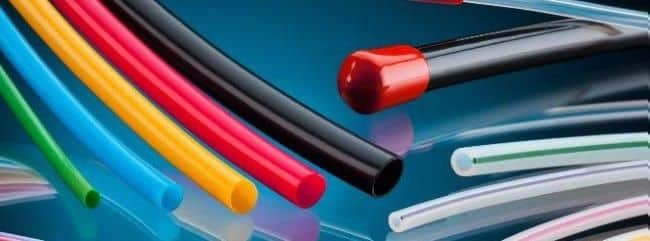Polytetrafluoroethylene is one of the most popular materials used for Fluid Transfer and Electrical systems today. Products made by any PTFE tubing manufacturer inherit the polymer’s many excellent properties. They become flexible and resistant to corrosive substances and electricity. They also have a great tolerance to both high and low temperatures, so they can be employed in extreme environments. It’s no wonder that they’re utilized for various commercial and industrial applications.
These outstanding qualities often make people speculate about the origins of this tubing material. Since PTFE is a type of plastic, it’s clear that it’s not a natural substance. So, how exactly did this super polymer come to be? Read on to find out.
1938 – The Invention of PTFE
PTFE was first made on April 6, 1938, by a young chemist named Roy J. Plunkett, who was working for Kinetic Chemicals, a joint venture of General Motors and the chemical manufacturer DuPont. He was around 28 years old when he created the groundbreaking invention that changed his life forever. His discovery of the initial version of this super polymer can be attributed to sheer luck, as it was the accidental byproduct of an experiment intended to manufacture something else.
On the faithful morning of the discovery, Plunkett and his assistant Jack Rebok had been trying to make a new chlorofluorocarbon refrigerant with tetrafluoroethylene (TFE) and hydrochloric acid. When they opened the pressurized canisters that held the TFE gas, no vapor flowed out. They checked its contents and found a waxy, white powder that was slippery to the touch instead. They realized that the TFE had polymerized and transformed into what is now known as polytetrafluoroethylene.
1939-1945 – Early Uses and Patent
Scientists started to discover the amazing qualities of PTFE. It was even dubbed as the “slickest substance on earth” because, at the time, it held the record for having the lowest known dynamic and static friction coefficient. They began experimenting on how this new polymer could be utilized, and in 1941, it was officially patented by DuPont. When they finally figured out a few years after that this plastic’s properties couldn’t be beaten by other materials, the PTFE manufacturer registered its commercial trademark under the name Teflon.
PTFE even played an instrumental part in World War II. Since it had such unique properties, it was utilized in the 1942 Manhattan Project, also known as the venture that created the first atomic bomb. It held the highly corrosive uranium hexafluorides, which were employed in synthesizing the fuel for the nuclear weapon that ended the war.
1946-1969 – The Famous Non-Stick Pan and Other Applications
One of the most famous applications of this material is for cookware. Polytetrafluoroethylene-coated pans were the first non-stick kitchenware ever invented. They were the idea of Collette Grégoire, who convinced her husband, engineer Marc Grégoire, in 1954 to apply the substance to her aluminum pans, creating the earliest prototype of the product. In 1961, a similar item was launched in the US market under the name Happy Pan, which became a staple in many American households.
With continuous experimentation with the material, scientists started applying it to other fields. It was used in aeronautic components for humanity’s first foray into outer space as well as in waterproof clothing.
Current Uses for PTFE
Today, this material can be found almost anywhere, especially in this age of electronics. PTFE tubing is one of the main components of many modern devices. It often acts as an insulative sheath for their electrical wiring. It’s also used in airplane and automobile circuitry because it can withstand extreme temperatures.
Aside from electronics, PTFE is heavily utilized in the manufacturing business. It’s the perfect piping material for systems that handle corrosive chemicals. It’s also ideal for additive manufacturing because these tubes can carry the molten hot 3D printer ink without getting damaged.
PTFE tubing even has applications in healthcare. It’s the choice material for catheters and other medical devices, as it’s biocompatible.
This versatile polymer has been evolving over the years. Even if it has been nearly a century since its discovery, people are still finding new uses for it. Contact Tef – Cap Industries Inc., a medical-grade PTFE supplier, if you need this tubing for your business.

